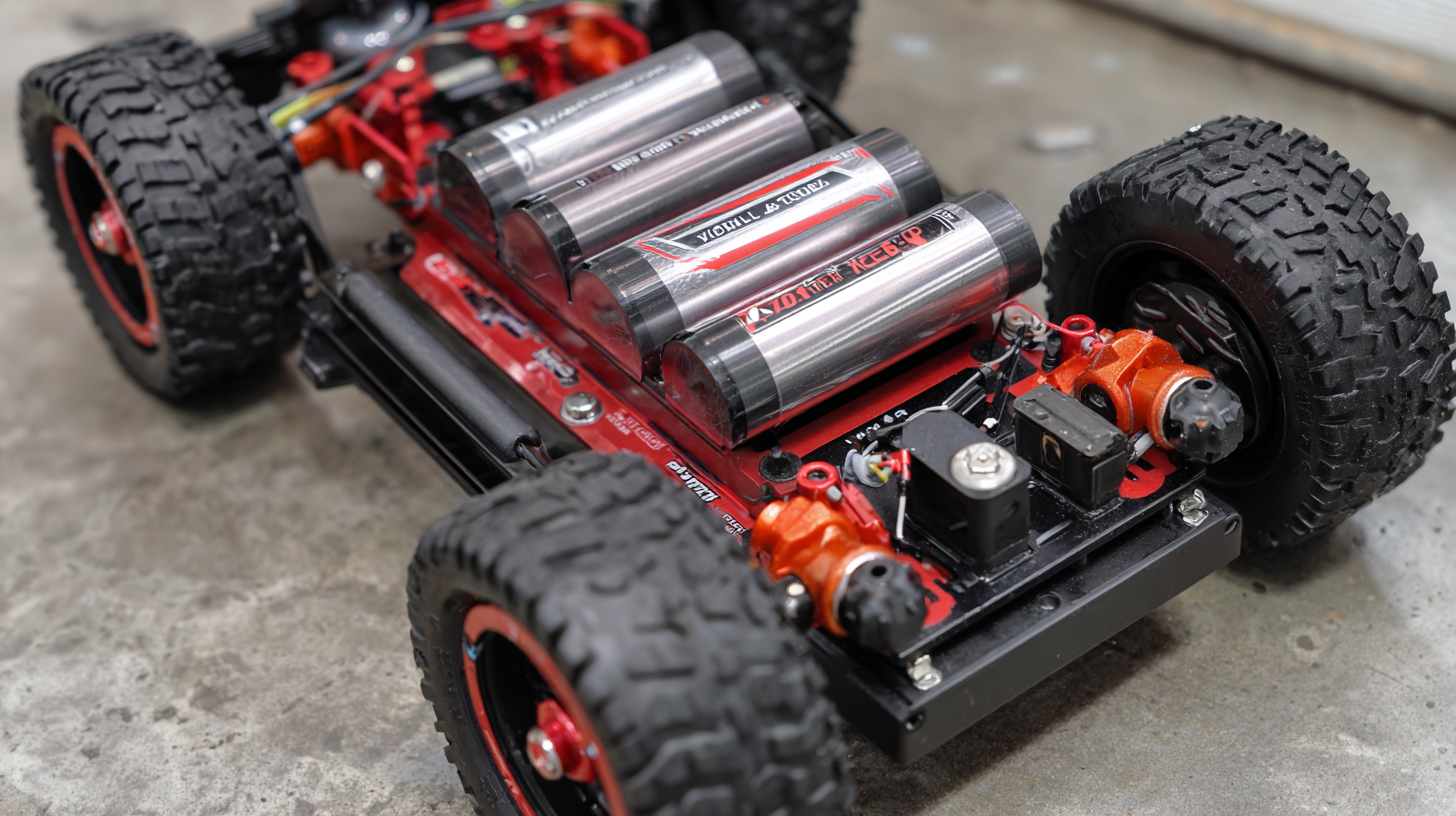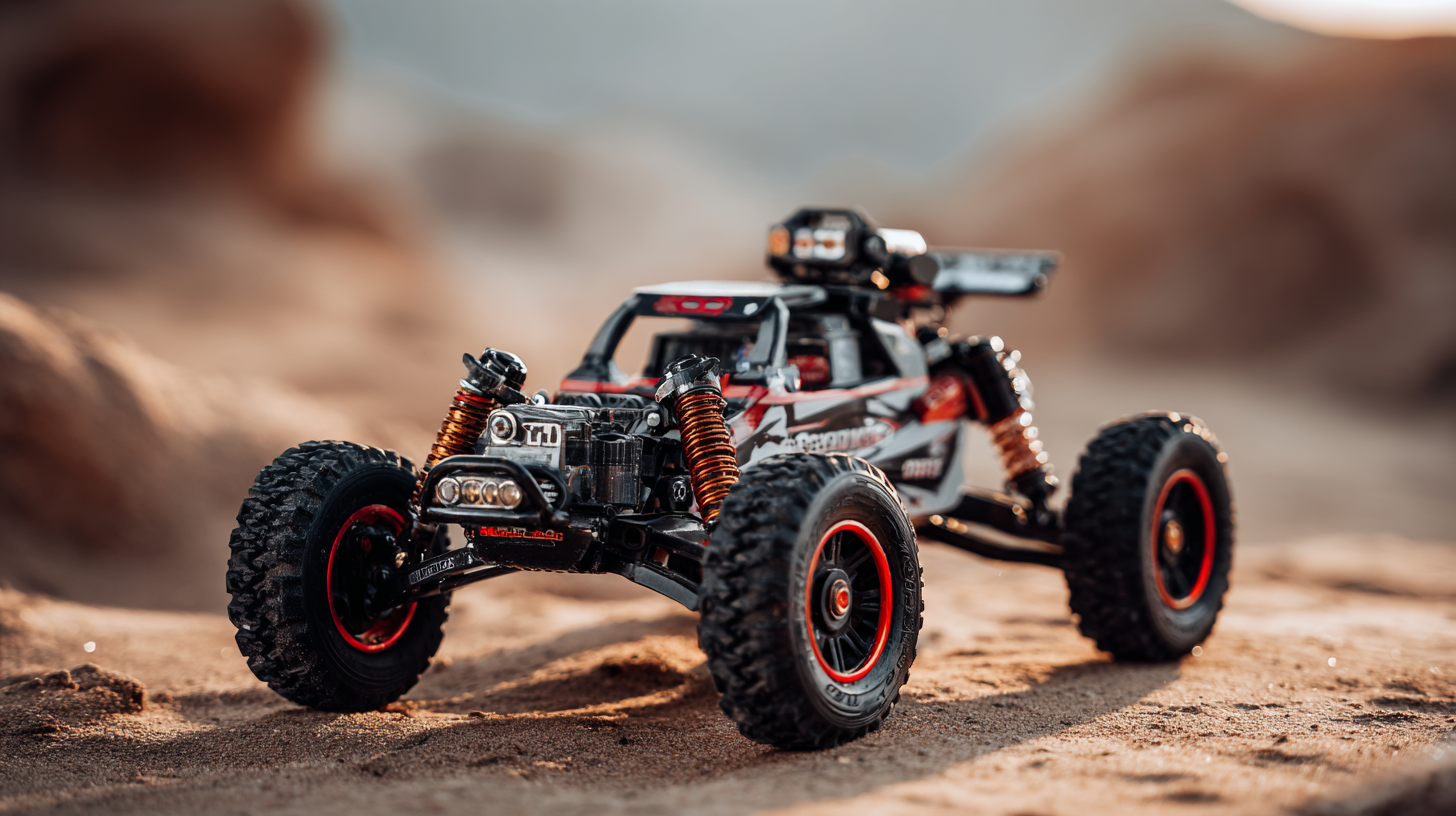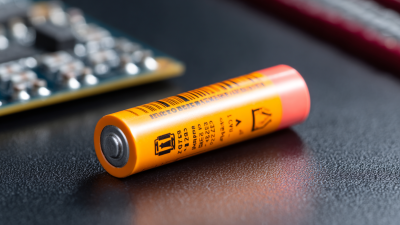 +86-13928815851
+86-13928815851
Leave Your Message
-
 CONTACT NUMBER
CONTACT NUMBER -
 CONTACT NUMBER
CONTACT NUMBER -
 CONTACT NUMBER
CONTACT NUMBER



When it comes to maximizing the performance of your RC car, selecting the right RC car battery is crucial. According to recent industry reports, battery choice can significantly influence speed, running time, and overall handling, with estimates suggesting that the right battery can boost performance by as much as 30%. Lithium Polymer (LiPo) batteries, for example, are favored for their high energy-to-weight ratio, offering longer run times and faster recharge capabilities compared to traditional nickel-based batteries. Additionally, with advancements in battery technology, understanding the nuances of voltage, capacity, and discharge rates becomes essential for competitive edge. In this blog post, we will delve into the key factors to consider when choosing an RC car battery, ensuring you can achieve peak performance on the track.

When selecting the right RC car battery, it’s essential to understand the various types available, each with distinct pros and cons. The most common types include NiMH (Nickel-Metal Hydride), LiPo (Lithium Polymer), and LiFe (Lithium Iron Phosphate) batteries. According to a report by the Battery University, NiMH batteries offer a good balance of cost and performance, making them popular among beginners. They typically have a nominal voltage of 1.2V per cell and are less prone to overcharging, but their weight can detract from the overall speed and agility of the RC car.

On the flip side, LiPo batteries are favored by many professional racers due to their lightweight design and higher discharge rates, which can boost acceleration and speed. A study by the Electric Power Research Institute highlights that LiPo batteries can deliver higher voltages and energy densities—up to 250 Wh/kg—compared to their NiMH counterparts. However, they require careful handling and charging processes to avoid safety hazards. Meanwhile, LiFe batteries provide enhanced safety and longevity but are heavier and offer less energy density, making them less desirable for high-speed racing applications. Understanding these characteristics will aid enthusiasts in making informed decisions tailored to their performance needs.
When selecting the right RC car battery for maximum performance, several key factors must be taken into account to ensure optimal operation. Firstly, understanding the type of battery chemistry is crucial.
Lithium Polymer (LiPo) batteries are the most commonly used in RC cars due to their high power-to-weight ratio and discharge rates. However, they require careful handling and specific chargers. On the other hand, Nickel-Metal Hydride (NiMH) batteries are more user-friendly and safer but may not deliver the same performance peaks as LiPo.
Tips: Always check the milliamp hour (mAh) rating of the battery. A higher mAh rating indicates a longer run time, which is essential for lengthy races or sessions. Additionally, consider the battery's voltage; using a higher voltage battery can increase power and speed, but make sure your car’s electronic speed control (ESC) can handle it.
Another important aspect is the discharge rate, measured in C ratings. This indicates how quickly the battery can release its stored energy. A higher C rating is beneficial for high-performance racing, where quick bursts of power are needed. Finally, always pay attention to battery size and weight to ensure compatibility with your RC car while maintaining the desired speed and maneuverability. Keeping these factors in mind will help you choose the right battery for peak performance.
 When it comes to optimizing your RC car's performance, the battery you choose plays a crucial role. Battery capacity, measured in milliampere-hours (mAh), directly influences how long your RC car can run before needing a recharge. A higher capacity battery allows for longer run times, which is especially beneficial if you enjoy extended racing sessions or off-road adventures. However, it's essential to find a balance, as larger batteries can add weight, potentially affecting speed and maneuverability.
When it comes to optimizing your RC car's performance, the battery you choose plays a crucial role. Battery capacity, measured in milliampere-hours (mAh), directly influences how long your RC car can run before needing a recharge. A higher capacity battery allows for longer run times, which is especially beneficial if you enjoy extended racing sessions or off-road adventures. However, it's essential to find a balance, as larger batteries can add weight, potentially affecting speed and maneuverability.
Additionally, the voltage of the battery can impact performance significantly. Higher voltage batteries can provide more power, allowing your RC car to reach greater speeds and improve acceleration. Understanding the relationship between battery capacity and voltage enables you to select a battery that not only meets the requirements of your specific RC vehicle but also enhances your overall racing experience. It's imperative to consider both aspects to ensure maximum performance and efficiency on the track.
When selecting an RC car battery, understanding the importance of voltage is crucial for maximizing performance. Voltage, expressed in volts (V), directly affects the speed and power of your RC vehicle. Most RC car batteries fall within the range of 6V to 22.2V, corresponding to different chemistry types—NiMH and LiPo being the most common. A higher voltage battery can deliver more power, thereby increasing acceleration and top speed. According to a report by the International RC Car Association, upgrading from a 7.4V to a 11.1V LiPo battery can enhance your car's overall performance by up to 30%, given that the motor and electronic speed controller (ESC) can handle the increased power.
Moreover, voltage affects not only speed but also the runtime and efficiency of your RC car. Batteries with a higher voltage will draw less current to generate the same amount of power, which can lead to longer run times and less heat generation. The Royal Society of Engineers indicates that pairing a higher voltage battery with appropriately rated components can improve efficiency by over 15%, offering a better driving experience. Therefore, carefully considering the voltage of your battery in relation to your RC car’s specifications will ensure you achieve optimal performance and longevity from your setup.
Maintaining and caring for your RC car battery is crucial for achieving optimal performance and extending its lifespan. Regularly checking the battery’s voltage is the first step; a well-maintained battery should be stored at around 3.7 volts per cell. If you notice the voltage drops significantly, it’s time for a recharge. Additionally, ensure that the battery terminals are clean and free of corrosion. A simple wipe with a cloth can help maintain good contact and prevent energy loss during use.
One of the best practices for battery longevity is to avoid deep discharges. Lithium polymer (LiPo) batteries, commonly used in RC cars, can be damaged if drained too low. It is advisable to recharge your battery when it reaches about 20% capacity. Many enthusiasts invest in a smart charger that automatically handles charging cycles and can monitor the temperature, safeguarding the battery from potential issues. Furthermore, store your battery in a cool, dry place, ideally in a fire-resistant bag. By following these steps, you can ensure that your RC car battery stays in peak condition for many exhilarating runs.






